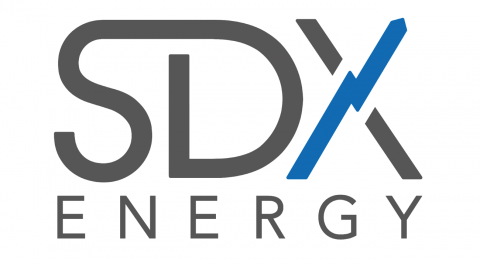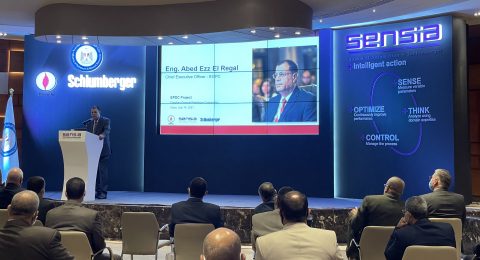The United Arab Emirates (UAE) consists of seven emirates including Abu Dhabi, Ajman, Dubai, Fujairah, Ras al-Khaimah, Sharjah and Umm al-Quwain.
Oil and gas production has been the mainstay of the economy of the country. By far, the biggest deposits of oil in the UAE have been found in Abu Dhabi. The emirate controls more than 85 percent of the UAE’s oil output capacity and more than 90 percent of its reserves. Dubai and the northern emirates have a minor share.
Through its national oil company, Abu Dhabi National Oil Company (ADNOC), Abu Dhabi is planning to increase its production capacity to 3.5 million barrels of oil per day (bopd) by 2018, from current at 2.8 million bopd.
The previous Minister of Energy, Mohammed Al Hamli, who was replaced recently by Suhail Mohammed Al Mazrouei, revealed early this year that Abu Dhabi fell short of meeting its target to raise oil production to 3 million barrels of oil per day (bopd) by the end of last year.
Abu Dhabi’s oil production now stands at 2.8 million bopd for January, according to Al Hamli who was speaking at an industry event held in Abu Dhabi early this year.
Action Plan
ADNOC operates 14 subsidiaries which participate at every level of the oil and natural gas sectors. The contract structure is based on a long-term, production-sharing basis, often through joint venture companies.
Most of Abu Dhabi’s producing oil fields are operated by three consortia: Zakum Development Company (ZADCO); Abu Dhabi Marine Operating Company (ADMA-OPCO) owned by ADNOC, BP plc, Total S.A. and Japan Oil Development Co. Ltd. (JODCO); and Abu Dhabi Company for Onshore Oil Operations (ADCO) – Royal Dutch Shell plc, BP, Total, Exxon Mobil Corp. and Portugal’s Partex Oil and Gas Group.
Much oil production in the UAE is from the Zakum oil system, a collection of oil fields which together make up the third largest oil zone in the world. The Upper Zakum field is run by ZADCO, 60-percent owned by ADNOC with the JODCO and ExxonMobil holding the remaining stakes.
Abu Dhabi now has a plan to boost its crude production capacity to 3.5 million bopd to 2018. As part of this strategy, ZADCO is reviewing the possibility to use extended reach drilling from four artificial islands to expand production from the current 550,000 barrels per day to 750,000 barrels per day by 2015, increasing the recovery rate to 70 percent.
The largest onshore oil fields are operated by ADCO. ADCO operates the Bu Hasa oil field, which produces as much as 600,000 barrels per day, as well as the Murban Bab, Sahil, Asab, and Shah oil fields, contributing another 705,000 barrels per day of light, sweet crude.
These projects are components of a plan to boost ADCO’s aggregate production to 1.8 million barrels per day from its current 1.4 million barrels per day by 2017. This means the comprehensive development of a group of fields and reservoirs, including Asab Field development to increase sustainable production from 290,000 bopd to 340,000 bopd.
ADNOC said in a statement that its investments include the development of the Sahil and Shah fields to increase their production capacity so that Sahil can produce 100,000 barrels per day instead of its current 55,000 barrels per day, and Shah’s production becomes 70,000 barrels per day instead of its present 50,000 barrels per day.
“Likewise, the Jasyoura field is to be developed to accommodate two gas separation lines in a new central plant due to be operational by the end of March 2013,” ADNOC said.
ADNOC said it is also developing Adco’s Thammama and Habshan 2 reservoirs to boost production to 80,000 bopd.
“Habshan 1 is also under development, the first package of which is estimated to increase the production by 30,000 barrels per day by the end of 2014. Likewise, the development of North East Bab fields are expected to increase sustainable production to 230,000 barrels per day by 2016 (for Rumaitha Field) and by 2017 for Al Dhabiya Field. Development projects will also cover Bida Qamzan field and Bab Gas Compression project,” the statement added.
ADMA-OPCO operates the main offshore assets in Abu Dhabi, which have been in redevelopment to maximize output. The Umm Shaif and Lower Zakum offshore oil fields have a combined capacity of 520,000 barrels per day, although after an expansion at each they will have a production capacity of 425,000 bopd and 300 000 barrels per day, respectively. The company drilled 22 new wells in 2011 as part of its capacity boost.
The company is currently involved in the development of Zakum Lower Field to increase its production by 100,000 barrels per day by 2016. The company is currently operating seven drilling rigs and two barges, which will almost double in the next 2 to 3 years as part of the capacity boost.
“The company is also planning to develop new fields like Razbot and Umm Lulu fields to process, store and ship 105,000 barrels per day by the common facilities. Additionally, work is underway in Nasr Field which is expected to process 65 000 barrels per day and the shipment of the crude for final processing, storage and shipping to Das facilities. These projects are expected to increase ADMA-OPCO’s oil production to 970,000 barrels per day by 2020,” the statement added.
Two new oil fields have also come into development: Nasr and Umm al-Lulu. These will add a further 170,000 barrels per day capacity by 2018.
Zakum Development Company’s (ZADCO) development of Upper Zakum Field is one of the biggest ongoing projects.
“The projects facilities are to be installed on four artificial islands that are being constructed and connected to the present facilities to increase oil production to 750,000 barrels per day by 2017,” the company said.
Gas Crunch
While blessed with an abundance of accessible crude – reserves are estimated at about 92 billion barrels – Abu Dhabi is having more difficulty in producing enough gas to meet domestic requirements.
“It seems like we’re going to be a net importer of natural gas since there is no way that we can meet our domestic demand from existing sources,” said Al Hamli.
Gas import and export volumes in Abu Dhabi are now almost evenly matched, say energy officials.
The emirate exports natural gas it produces on its offshore fields to Japan. This leaves it short at home, and Abu Dhabi and Dubai draw on gas imported from Qatar via the Dolphin Energy pipeline.
In addition, Dubai buys liquefied natural gas (LNG) from the international markets. Abu Dhabi is set to follow suit and is building an LNG import terminal in Fujairah.
Abu Dhabi holds about 5 percent of the world’s proven reserves, but much of it is sulfur-laced sour gas, which is expensive to produce. ADNOC has responded to rapidly increasing demand by launching a major project to extract and process sour gas.
Al Hosn, a joint venture between ADNOC and the American company Occidental, will complete the Shah gas development by 2014, adding 500 million cubic feet of gas per day to the domestic supply.
ADNOC’s integrated gas development will also boost supply, while more sour-gas projects are under way.
Nevertheless, increasing demand from growing cities and industrial parks may keep the import-export balance tilted towards gas inflows.
“We are not really short of gas, but as we are looking into the deep future, unless we have some discoveries, we’re going to be a net importer,” said Al Hamli.
Source: Rigzone











